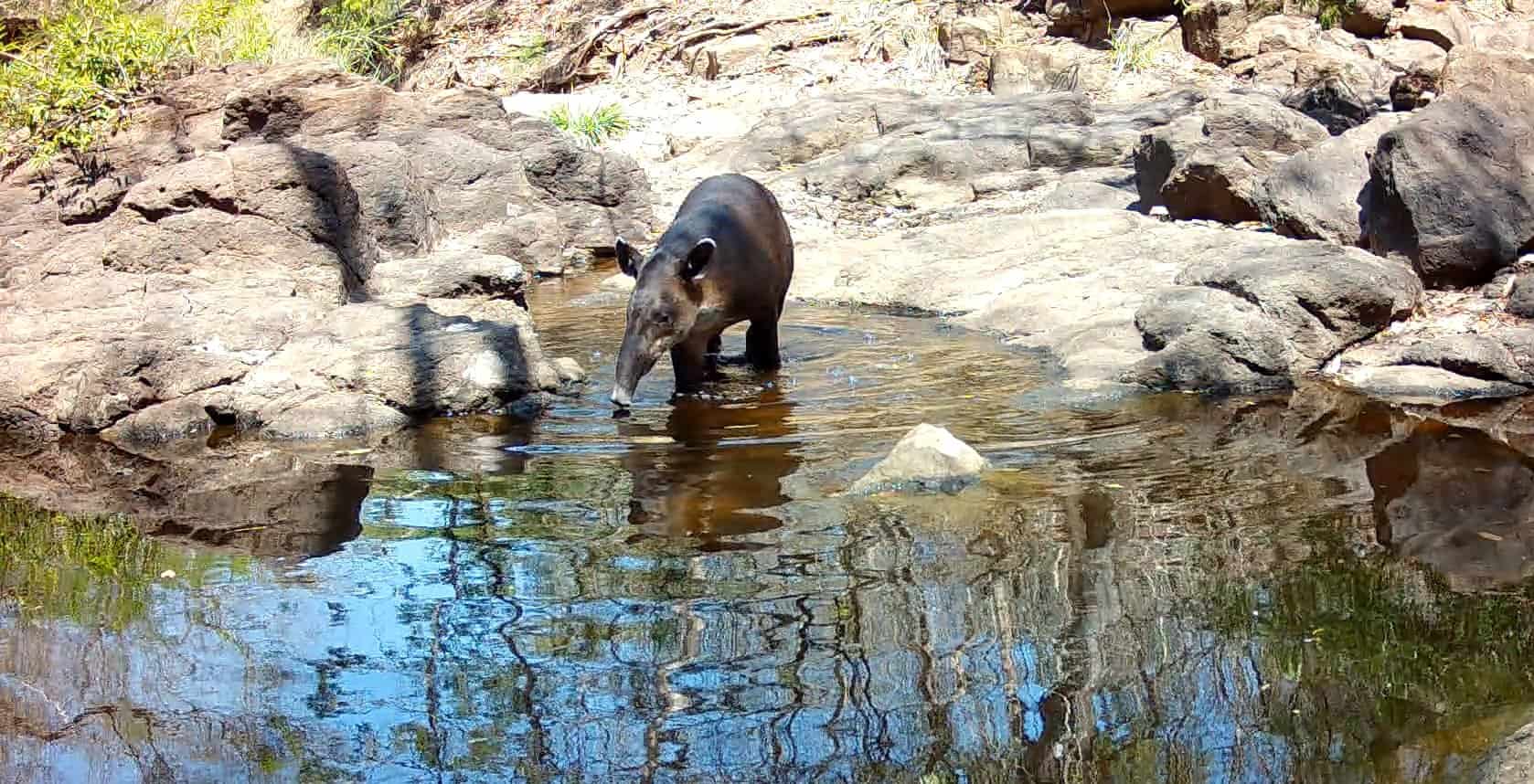Water is the source of life. I need it. You need it. The plants and animals of Costa Rica’s lush landscapes need it.
When tasked with documenting as many species as possible with my camera traps, I often use the source of life as an attractant. A camera trap placed by a source of water, more often than not, records more videos and more species than a camera placed in other parts of the forest. In my experience, this is almost always the case when I’m working in dry, dry Guanacaste.
Many parts of Guanacaste receive little or no rain for months on end, shrinking once freely flowing rivers and streams to small, scattered pools of water in the deepest nooks and crannies of the riverbed.
I recently have had the opportunity to work with Origen Escapes and Origen Foundation to place a large number of camera traps in an immense protected area in Guanacaste. The project began at the end of the traditional dry season and this year, thanks to the El Niño phenomenon, the beginning of the wet season wasn’t all that wet. With this in mind, one of the first questions I asked the folks I was working with was, “Where can we find some water?”
We were able to find several sources of water within the thousands of acres of land that comprise the study area. Some were hardly more than puddles with muddy pockets where peccaries were obviously bathing on a regular basis. Some must have had an underground source because they were still flowing even after months without rain.
One particularly interesting spot was a deep pool of brown water in the elbow of a dry riverbed, where the normal flow of water would have hit a rocky outcropping and taken a hard right. The water looked deep. There were decent-sized fish swimming around, and there were obvious signs of wildlife in the area – animal tracks in the sand and different sized piles of scat on the rocks. This was a prime place for a camera trap.
After many long weeks of anticipation, it was time to review the cameras. As I approached the camera over the pool of deep brown water, it was obvious that the water level had risen slightly, but otherwise everything looked the same. I used the small screen on the body of the camera to begin quickly reviewing the hundred or so videos that had been recorded over the preceding weeks.
A jaguar! A fantastic start. A female Baird’s tapir swimming through the water! With a spotted juvenile! And then another! And another! As my companion and I shouted with joy at each new video, I realized that we had stumbled upon something fantastic. We found a tapir swimming pool!
Baird’s tapirs, or dantas in Spanish, are Costa Rica’s largest mammals, coming in at over 500 pounds. I knew that they were in the area from previous studies, and I knew that they enjoyed being in water, often using it as a bathroom. However, I’d never come across a pool of water that was used so frequently. We recorded a few dozen videos of a female tapir and her offspring swimming, diving, splashing, and pooping in the deep brown pool.
The camera trap is there at this very moment, placed slightly higher above the waterline on a tree root protruding from the rocky embankment to protect it from the rising waters that come with the rainier months that are in our near future.
I’m practically boiling over with anticipation to check the camera a second time, but I have weeks to wait for that to happen. In the meantime, I’m excited to share the initial results with you. So click on the video below and enjoy the tapir swimming pool.
About the Author
Vincent Losasso, founder of Guanacaste Wildlife Monitoring, is a biologist who works with camera traps throughout Costa Rica. Learn more about his projects on facebook or instagram. You can also email him at: vincent@guanacastewildlifemonitoring.com







